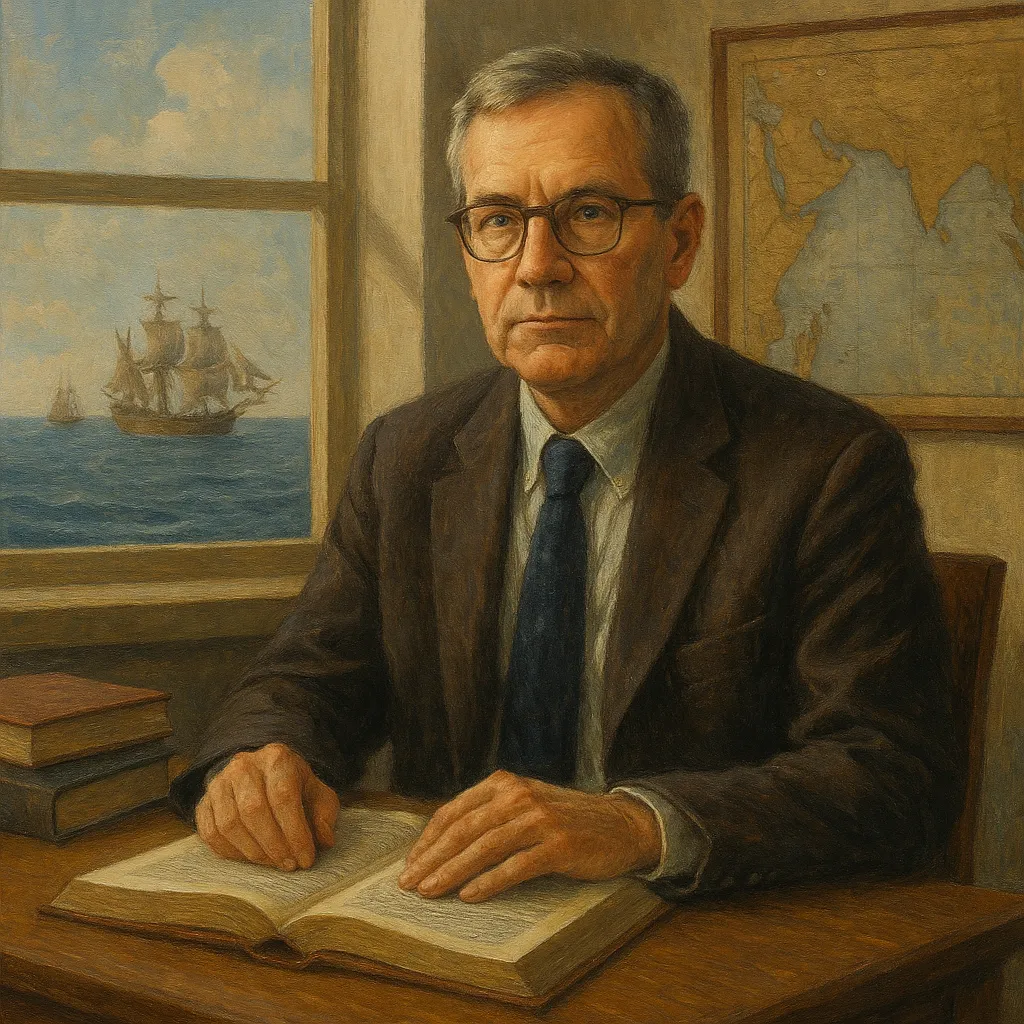By Professor Thomas R. Metcalf
Introduction
Over the past six decades, the historiography of British India—commonly referred to as “the Raj”—has undergone substantial transformation. From imperial justifications and nationalist grand narratives to the rise of subaltern voices and postcolonial critique, the field has been continually reshaped by ideological, institutional, and global academic shifts. This paper traces the evolution of scholarship on the British Raj between the 1960s and the 2020s, reflecting on the influences that shaped it, the major contributions that defined it, and the intellectual turns that reoriented the discipline.
Intellectual Beginnings and Imperial Historiography
The field of Indian history during the early postwar period was largely defined by two dominant paradigms: an imperialist framework that rationalized colonial rule and a nationalist model that celebrated resistance figures and movements. By the 1960s, however, these approaches were increasingly seen as restrictive. The academic environment was shifting, particularly in Britain and the United States, where imperial history began to decline as a field following decolonization.

Thomas R. Metcalf entered this evolving landscape through his training at Amherst College, where he explored Victorian liberalism in the context of William Gladstone’s political philosophy. His interest in liberalism, shaped in part by the geopolitical climate of the 1950s and events like the Suez Crisis, led him to pursue further study at Cambridge University. There, under the guidance of Ronald Robinson—co-author of Africa and the Victorians—Metcalf transitioned from a focus on British liberalism to imperial history, with a specific interest in how Victorian liberalism informed colonial policy in India following the 1857 Rebellion.
This early research laid the groundwork for Metcalf’s broader inquiry into the ideology of empire and its manifestations in South Asia.
Shifting Paradigms: The Decline of Imperial History and the Rise of Area Studies
The 1960s saw significant institutional changes in how non-Western regions were studied. The rise of area studies, especially in the United States, reflected a shift toward interdisciplinary and regionally focused research. Funded in part by Cold War priorities, this new framework emphasized local social structures, rural transformation, and indigenous political mobilization over imperial narratives.
Metcalf’s own academic trajectory was affected by this shift. His position at the University of Wisconsin was terminated in favor of faculty trained explicitly in area studies. In response, he pivoted to a new research focus on landed elites in colonial Oudh, analyzing the transformation of taluqdari estates following British annexation. His 1979 monograph Land, Landlords, and the British Raj explored how British legal and administrative reforms reshaped agrarian structures and reinforced elite dominance, offering a model for studying colonial society “from within.”
This work marked a turning point in how colonial relationships were conceptualized. No longer simply a story of British policy, colonial history now became a dialogue between imperial frameworks and indigenous agency.
The Cambridge School and the Emergence of Social History
The 1970s witnessed the emergence of the “Cambridge School” in Indian historiography. This group of scholars challenged nationalist interpretations that centered on anti-colonial leaders and movements. Instead, they emphasized factional politics, clientelism, and the role of local power brokers in shaping nationalist mobilization. As Anil Seal wrote:
“on the unsteady base of local squabbles for spoils rested the larger political systems of India… even the Congress itself was largely built out of this rubble.”
In parallel, social historians such as E.P. Thompson and Natalie Zemon Davis were redefining historical method by foregrounding everyday experiences. This shift encouraged Indian historians to study markets, religious institutions, and social classes as active agents in historical change. Works like Christopher Bayly’s Rulers, Townsmen and Bazaars and Metcalf’s own analysis of colonial landholding placed Indian actors at the center of the narrative, examining how local elites navigated and reshaped imperial structures.
Subaltern Studies and the Postcolonial Turn
By the 1980s, a significant intellectual shift occurred with the rise of the Subaltern Studies collective. Led by Ranajit Guha, this group emphasized the autonomy of subaltern groups—peasants, tribals, and lower castes—arguing that their resistance and consciousness operated independently of elite nationalist leadership. Subaltern historians rejected colonial and nationalist historiographies alike, arguing for the recovery of voices and movements silenced by dominant narratives.
Although Metcalf did not formally align with this school, its impact on the field was profound. Subaltern Studies broadened the scope of Indian history, attracting interdisciplinary interest and influencing historical writing well beyond South Asia.
Simultaneously, Edward Said’s Orientalism (1978) catalyzed a renewed interest in how colonial knowledge was produced. Said’s critique of the “Orient” as a Western construct initiated a broader examination of cultural representation in colonial contexts. Postcolonial theory emerged as a key mode of analysis, particularly in literature and history departments. In response, Metcalf published An Imperial Vision (1989), a study of British colonial architecture in India. The book examined how physical structures, like texts, reflected ideological constructions of empire.
Liberalism, Knowledge, and Imperial Governance
Building on these themes, Metcalf’s contribution to The New Cambridge History of India series, Ideologies of the Raj(1994), engaged with the debate over liberalism and empire. While acknowledging the complicity of liberal ideals in justifying imperialism, he resisted totalizing conclusions. Instead, he argued for a more nuanced view that recognized internal tensions within liberal thought—between universal ideals and colonial differentiation. The work remains a widely cited reference for scholars examining the intellectual foundations of colonial rule.
Global Histories and Oceanic Frameworks

The turn of the millennium brought with it a renewed interest in global and transnational histories. Historians began to move beyond national boundaries, seeking to understand the flows of people, goods, and ideas across oceans and empires. Within this framework, Indian Ocean studies gained traction. Metcalf’s Imperial Connections (2007) explored how India functioned as a central hub in an imperial network that linked South Asia with East Africa, Southeast Asia, and beyond. This study emphasized how mobile actors—soldiers, lawyers, laborers—carried institutional norms, legal practices, and social values across regional boundaries.
Metcalf’s work in this field intersected with the contributions of other scholars, including Sugata Bose (A Hundred Horizons) and Sunil Amrith (Crossing the Bay of Bengal), who similarly traced the cultural and political exchanges across the Indian Ocean world.
Feminist History and the Study of Gender
A major historiographical development over the last four decades has been the rise of feminist history and the study of gender. Scholars such as Gail Minault and Barbara Ramusack opened new avenues of inquiry into women’s roles in colonial and postcolonial India. Edited volumes like Separate Worlds (1980) and The Extended Family (1982) compiled pioneering work in this area and highlighted the gendered dimensions of colonial experience.
Metcalf’s engagement with gender history emerged through teaching and participation in academic conferences, including a pivotal event on “imperialism and feminism” organized in the early 1990s. Although initially hesitant to identify with the feminist label, Metcalf recognized the analytical power of gender as a category, alongside race and class, in structuring historical knowledge. His later seminars and writings integrated these perspectives into broader discussions of empire.
Conclusion
From the decline of traditional imperial narratives to the rise of subaltern studies, postcolonial theory, and transnational frameworks, the historiography of the British Raj has expanded in scope, methodology, and theoretical depth. Professor Thomas R. Metcalf’s contributions have spanned many of these key developments—from liberalism and landed elites to architecture, knowledge production, and global connections.
His work reflects a lifelong commitment to understanding how empire operated—structurally, ideologically, and spatially—across time and space. As the study of colonial India continues to evolve, it draws upon the intellectual legacies of scholars who shaped the field by pushing its boundaries. Metcalf’s career not only exemplifies this trajectory but also continues to inform its future directions.
